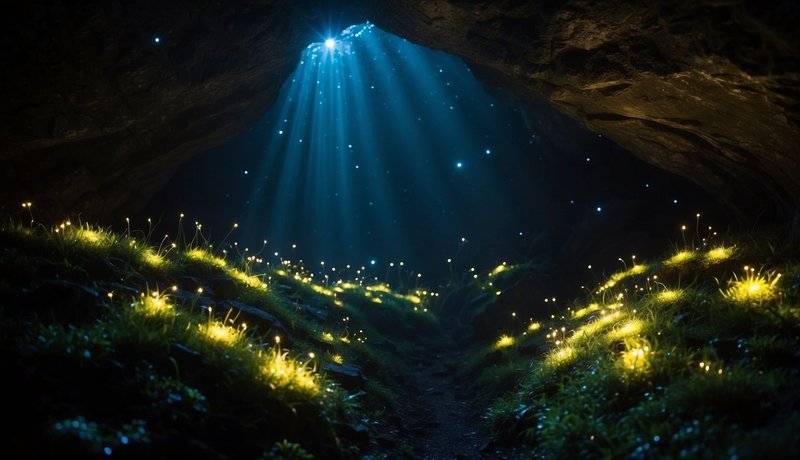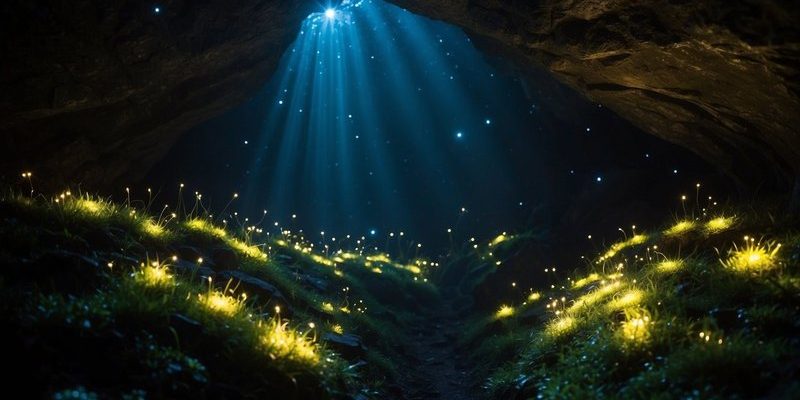
Glow worms are not only captivating but play a vital role in the ecosystem. Think of them as tiny guardians of the dark, helping to maintain the balance of their habitats. But here’s the thing—they need our help. Protecting their habitats is essential not just for their survival but for the health of the entire environment. In this post, we’ll dive deep into the world of glow worm conservation and explore what we can do to safeguard these little luminaries.
What Are Glow Worms and Their Role in the Ecosystem?
Glow worms are actually the larvae of various beetles, most commonly seen in damp, dark environments like caves and forests. They produce a soft, greenish light to attract prey, usually small insects like moths. You might be wondering, why do we need to care about these tiny creatures? Well, glow worms form an essential part of the food chain. They help regulate insect populations, preventing them from exploding and causing ecological imbalances.
Moreover, glow worms contribute to nutrient cycling in their habitats. As they catch insects, they provide food for predators, like bats and birds, which in turn help pollinate plants. It’s a beautiful cycle of life that can easily be disrupted if their environments are harmed. So, understanding glow worms’ roles gives us a clearer picture of why conserving their habitats is crucial.
The Threats Facing Glow Worms
Despite their resilience, glow worms face numerous threats. One of the most significant issues is habitat loss. Urbanization, deforestation, and agricultural activities are rapidly degrading the environments that these creatures need. Less natural habitat means fewer places for them to thrive, and without the right conditions, their populations can quickly dwindle.
Pollution is another major concern. Chemicals from pesticides and other pollutants can compromise the delicate ecosystems glow worms depend on. This pollution can affect not just glow worms but many other species as well, leading to a ripple effect throughout the food chain. So, protecting their habitats isn’t just about glow worms; it’s about preserving the entire ecosystem.
Why Dark Habitats Are Important
Dark habitats, like caves and dense forests, are critical for glow worms. They provide the moist, sheltered environments that these creatures require to survive and thrive. Without these dark spaces, glow worms can’t find the right conditions to grow or reproduce. Think of it this way: Just as we need safe, comfortable places to rest, glow worms need their own special spots in nature.
These habitats also play a key role in biodiversity. When we preserve dark habitats for glow worms, we’re also providing a refuge for countless other species, from fungi to rare plants. The health of one species often indicates the health of the entire ecosystem. By protecting glow worms, we take a step toward preserving the richness of life around us.
Steps for Effective Glow Worm Conservation
Conservation efforts for glow worms can be as simple as protecting their natural habitats. Here are some ways you can help make a difference:
- Support Local Conservation Projects: Many organizations work tirelessly to protect glow worm habitats. Donating time or resources can greatly impact their success.
- Reduce Pollution: Limit the use of harmful chemicals and pesticides in your garden to keep nearby ecosystems healthy.
- Raise Awareness: Educating others about glow worms and the importance of their habitats can spark change within your community.
- Visit Protected Areas: If there’s a protected area near you that hosts glow worms, plan a visit! Your entrance fees often contribute to conservation efforts.
These steps may seem small, but collectively, they can create a significant impact. The more we understand about glow worms and their needs, the better we can protect them.
Citizen Science: Engaging the Community
Citizen science is a fantastic way to involve the community in glow worm conservation. By engaging local residents, we can gather essential data about glow worm populations and their habitats. Many organizations offer training sessions for volunteers to learn how to monitor glow worm sites, collecting valuable information about their health and numbers.
Plus, community involvement fosters a sense of ownership and responsibility towards local wildlife. When people feel connected to their environment, they’re more likely to take action to protect it. You could even host events, like glow worm walks, to educate others while enjoying the magic of these creatures firsthand.
Glow Worms and Climate Change
Like many species, glow worms are not immune to the impacts of climate change. As temperatures rise and weather patterns shift, their delicate habitats may be altered, making it harder for them to survive. Changes in rainfall can affect moisture levels, and increased temperatures may lead to habitat desiccation.
Addressing climate change is crucial in the broader context of glow worm conservation. Every little effort counts. Supporting renewable energy, reducing waste, and advocating for policies that protect the environment can contribute positively.
Protecting glow worms isn’t just about saving a single species; it’s about preserving the intricate web of life that depends on them. The beauty of these luminous insects serves as a reminder of why we should care. By safeguarding their habitats, reducing pollution, and getting involved in conservation efforts, we help create a brighter future for them and the environment as a whole.
So, let’s keep those dark habitats safe and sound. Every small action counts, and together, we can light the way for glow worms—and the countless species that share their home. Remember, protecting the environment is a collective responsibility, and your role matters.

